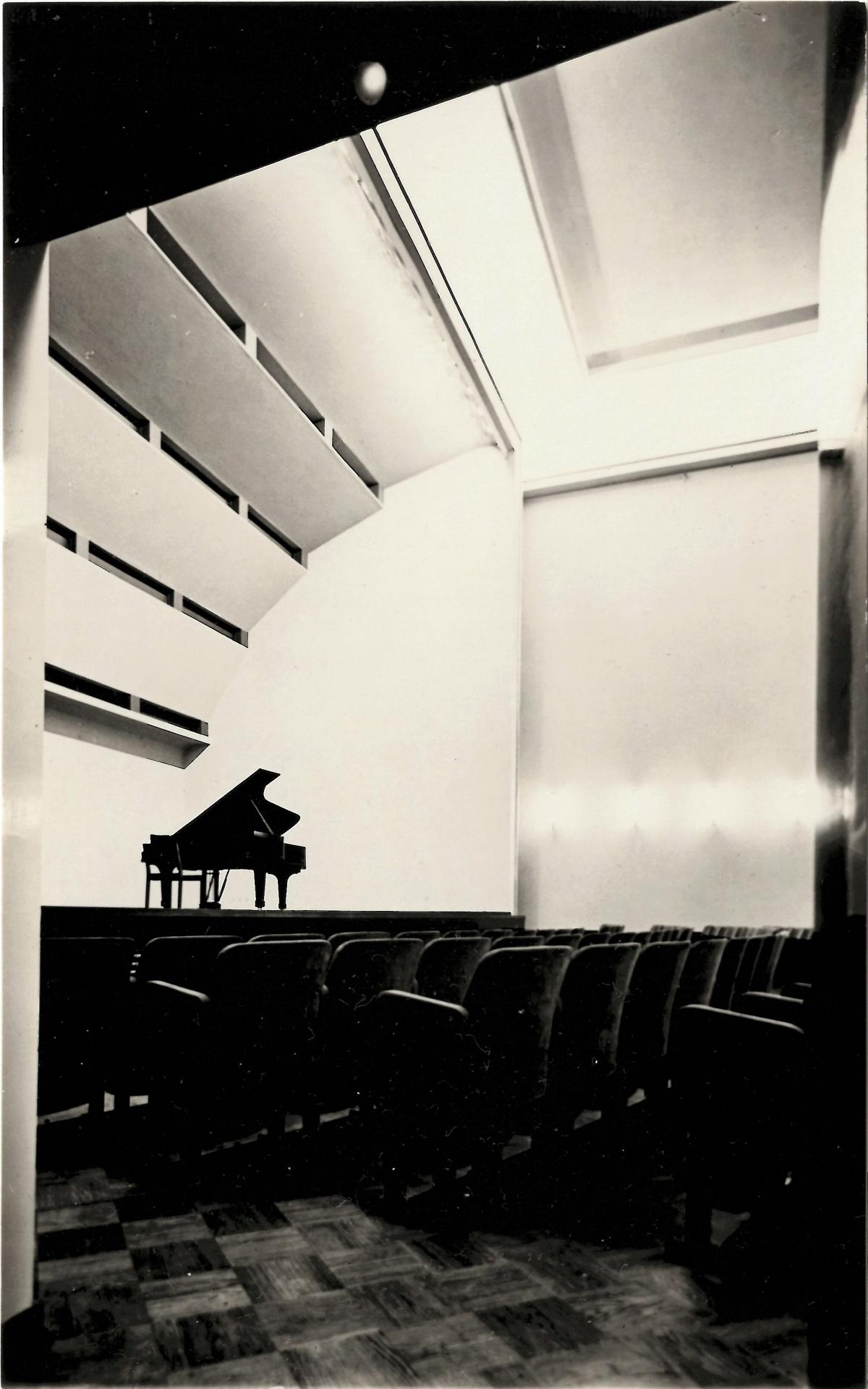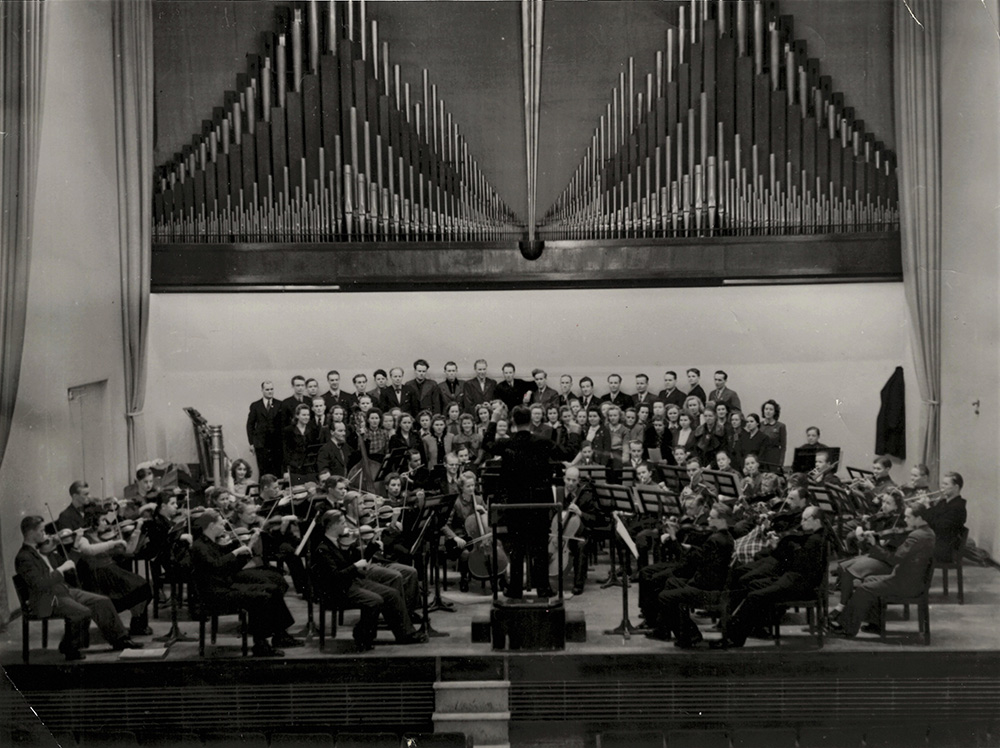The Long-awaited Concert Hall
High expectations were set for the concert hall and its functionality was evaluated already in the very first concert.

‘The most exciting detail, acoustics, was resolved in a most happy way at the City Orchestra’s people’s concert yesterday at the very beginning.”
- Uusi Suomi 14 September 1931
The long-awaited first concert at the Conservatory was held on 13 September 1931. The first concert attracted a great deal of people, and the queue outside was long. ‘A queue stretching all the way to the Arkadia bridge was a rare site in these parts, demonstrating the interest of our audience in the new concert hall’ wrote Uusi Suomi the following day.
The expectations were great, as the capital had lacked a sufficiently large and high-quality hall. Great hopes were set for the acoustics of the new concert hall. On 20 June 1929, Uusi Suomi had already reported that ‘a most devoted attention had been given to the acoustics of the building.’ Eino Forsman, the architect, had indeed visited Europe and America to explore the latest research, as ‘only recently has it been possible to gradually investigate acoustic phenomena that have so far been incomprehensible.’
The new building met all expectations. ‘For those who were lucky enough to secure tickets, the first visit could hardly have been a disappointment,’ Uusi Suomi reported the day after the first concert. ‘The orchestra echoes on both balconies of the new hall and down to the stalls with delightful harmony and softness. The different musical instruments can almost be discerned clearly, and at the same time there is plenty of richness in the ensemble playing, where you clearly feel the reasonable resonance base that emits the sound.’
On the same day, Helsingin Sanomat wrote slightly more critically, but in a generally positive tone: ‘A curious audience listened to the first notes of the orchestra: is the acoustics good or will it disappoint? And soon it could be said that it meets all reasonable requirements. All the details of the music are clearly heard and the joint echo is also comfortably smooth. As a whole, the acoustics are more “chamber music” than “symphony”, as due to the hall’s relative smallness, the orchestra echo does not reach a brilliant, full resonance. But one gets used to this soon; I would even go as far as to say the general tone of the echo has its own special charm.’
Since the very beginning, the hall was also used to organise other events. On 5 October 1931, Uusi Suomi reported how ‘Elli Tompuri did a reading of Andersen fairy tales in the Conservatory Hall yesterday. The new concert hall proved to be an excellent place for readings: its size is best suited for this intimate form of art and its acoustics is unsurpassed.’


The organ pipes built in 1939 dominated the background of the stage in the concert hall until their dismantling in the early 1990s. The student orchestra and choir in an undated image. University of the Arts Helsinki / Sibelius Academy archive.
Menneisyyden muistia tulevaisuutta varten
Tässä blogissa Riku Hämäläinen kirjoittaa Taideyliopiston muistitietohankkeen vaiheista. Hankkeen tarkoituksena on kerätä entisten ja nykyisten opettajien, oppilaiden ja muun henkilökunnan muisteluita taideopetuksen historiasta, arjesta, toiminnasta, sattumuksista, jne. tulevaisuuden tutkimuksia varten. Filosofian tohtori, dosentti Riku Hämäläinen toimii Historiafoorumin yliopistotutkijana. Hän johtaa muistitietohanketta, johon kuuluu niin uuden aineiston kerääminen kuin jo olemassa olevan arkistomateriaalin saatavuuden parantaminen.
Uusimmat julkaisut
Seuraa blogia